Exhibition of Twelve Outstanding Chinese Works of Art @ Eskenazi Limited
Falangcai Porcelain Pear-shaped vase, Qing dynasty, Yongzheng reign mark and of the period, 1723-1735; Height 30cm. photo courtesy Eskenazi Limited
Eskenazi Limited, one of the world’s most respected dealers in Chinese art, is celebrating its golden jubilee with an exhibition of twelve exceptional pieces which have been acquired over the past ten years and set aside especially for this event. Fiftieth Anniversary Exhibition: Twelve Chinese Masterworks will be held at 10 Clifford Street, London W1, from Thursday 4 to Tuesday 30 November 2010. It was in 1960 that Giuseppe Eskenazi, with his late father, first opened a London office for the Milan family business. During the subsequent fifty years Giuseppe has built up a reputation for handling the very finest and rarest of pieces which have found homes in the world’s greatest museums and private collections.
Each piece in this exhibition is outstanding. Perhaps the most prized is a falangcai puce-enamelled porcelain pear-shaped vase (yuhuchun ping), Qing Dynasty, Yongzheng reign mark and period, 1723-1735, (above). Superbly painted, the main subject is two dragons with scaly, serpentine bodies each chasing a flaming pearl. Flames issue from the dragons and clouds swirl above them. This highly individual vase was made to order for the emperor and reference is made to it in the imperial records. It would have been decorated by a court artist in Beijing after manufacture at Jingdezhen. The only other comparable piece was, like this one, in a private collection in Japan where it was nominated ‘Important Art Object’ in 1931 but was almost certainly destroyed in World War II.
The earliest piece is an archaic bronze wine vessel and cover (hu), Middle to Late Western Zhou, 10th-9th century BC, that testifies to the high artistry in China three thousand years ago. The vessel bears an important inscription Duke of Rui respectfully made this ritual vessel for Lord Li and has appeared in a wide range of publications. In the 19th century it belonged to Viceroy Duan Fang (1861-1911) of Shanghai, one of the foremost collectors of ancient bronzes. He was an official of the highest rank, serving both the Guangxu emperor and his mother Cixi, the powerful and notorious empress dowager.
Archaic Bronze Wine Vessel & Cover (hu). Middle to Late Western Zhou, 10th-9th Century BC. Height 40.3 cm. photo courtesy Eskenazi Limited
A wonderful gold kneeling figure of a shaman (xian) proffering a shallow dish dates from the Han period, 206 BC-220 AD. It appears to be unique although four comparable examples exist in bronze: one in Paris, one in the Osaka Museum, and two in China. The Eskenazi figure is skilfully fashioned in gold indicating the status of its original owner. The figure is probably associated with shamanistic practices or wu, such as the search for immortality. This figure wears a caped feather tunic; such garments imbued the immortals with magical properties of light beyond the bounds of the human body.
Gold Kneeling Figure. Han period, 206 BC-220AD. Height 10.8 cm. photo courtesy Eskenazi Limited
Of great rarity is the glazed stone-paste ear-cup, so-called because the handles are in the form of elongated ears. Dating from the Late Eastern Zhou period, 3rd century BC, its unusual decoration of C-shapes and raised dots in shades of turquoise, yellow, brown and white appear to imitate glass although nothing quite the same is known except for some beads.
Glazed Stone-paste Ear-cup. Late Eastern Zhou period, 3rd century BC. Length 13.6 cm. photo courtesy Eskenazi Limited
From the Northern Wei period, early 6th century, is a carving of an apsaras, formerly owned by the Albright-Knox Art Gallery, Buffalo, New York. Apsaras are heavenly beings depicted in various guises in the cave temples of Yungang, Longmen, Mogao, Maijishan, Gongxian and Xiangtangshan. This example, playing a drum, is most likely from Longmen and would have been placed on the ceiling or upper areas of the cave, befitting its celestial status. Common to all depictions of apsaras is the expression of movement, emphasised here by the windswept scarves and full, flowing sleeves with which they are often clothed.
Limestone Carving of an Apsaras. Northern Wei period, early 6th century. Height 54.5 cm. photo courtesy Eskenazi Limited
Another sculpture in the exhibition, which until recently belonged to an Australian collector, is the white marble Bodhisattva seated on a lotus base in meditative posture dating from the Tang period, 8th century. With its fleshy, full-bodied torso, elaborate drapery and rich jewellery, this is a particular fine example of the sculptural realism of the period. Examples of Tang Bodhisattvas in similar pose, which is unusual as the head is tilted slightly to the left, may be found among the stone carvings of Tianlongshan, near Taiyuan, Shanxi province. Marble was increasingly used at this time probably as a result of Hsüan-tsung’s restriction on the use of bronze for casting images.
Marble Carving of a Bodhisattva. Tang period, 8th century, Height: 76 cm. photo courtesy Eskenazi Limited
The gilt silver bowl and cover, Tang period, late 8th-early 9th century, is the finest of only fourteen known similar examples, most of which are in museums, and is believed to have come from a tomb near Balin in Eastern Mongolia discovered in 1930. It had been acquired by the Swedish collector, Carl Kempe, by 1935 when it was exhibited at the famous exhibition of Chinese art held at the Royal Academy in London. This bowl is decorated with fruiting and flowering compositions, all of which are gilded.
Gilt Silver Bowl and Cover. Tang period, late 8th to early 9th century. Bowl dia 24.3 cm. Cover dia 24.5 cm. photo courtesy Eskenazi Limited
A rare example of Ding ware (glazed porcellaneous stoneware) of Northern Song-Jin period, 12th-13th century, is a dish decorated with a crisp and finely moulded design of a coiling dragon with open jaws pursuing a flaming pearl. Ding wares with dragon designs were made solely for the imperial court and this bowl almost certainly came from the same mould as the example in the Palace Museum, Beijing, and another in the Shanghai Museum.
Glazed Porcellaneous Stoneware Dish. Northern Song-Jin period, 12th-13th century. Ding kilns, Hebei province. Diameter: 23.1 cm. photo courtesy Eskenazi Limited
Slightly later in date and displaying an entirely different aesthetic is the blue and white porcelain dish, Yuan period, mid 14th century, one of the finest ever to have appeared on the market. Its sixteen lotus petal panels are decorated with flowering and fruiting plants, one panel incorporating an Arabic inscription. This may indicate that this particular dish was an important commission from the Middle East or Iran. The complex scene in the well shows a Buddhist lion holding in its teeth a ribbon to which is attached a brocade ball surrounded by various auspicious symbols such as horns, ingots, books, coral and a flaming pearl.
Blue & White Porcelain Dish. Yuan period, mid 14th century. Dia. 48 cm. photo courtesy Eskenazi Limited
The blue and white porcelain ‘palace bowl’, Ming dynasty, Chenghua mark and period, 1465-1487, is one of only nine examples of this type and design, seven of which are in museums. Its impeccable provenance includes the distinguished collection of Lord Cunliffe. The interior and exterior are delicately painted with stems of scrolling day lilies. From the time of its manufacture, the porcelain produced at Jingdezhen during this period has been judged as perhaps the finest ever made. The products tend to be small, presumably to the exacting taste of the Chenghua emperor. Although his reign was not especially long (22 years), the quantity of shards at Jingdezhen in this period – representing destroyed pieces that had been rejected as unworthy – is apparently much greater than for any other comparable period.
Blue & White Porcelain Bowl. Ming dynasty, Chenghua mark and of the period. 1465-1487. Dia: 14.6cm. photo courtesy Eskenazi Limited
Also of the Ming period but made for a different emperor is a yellow-glazed porcelain ewer and cover, Jiajing reign mark and of the period, 1522-1566. The thick ‘egg-yolk’ glaze of the outside contrasts with the white glazed interior. Comparable pieces, but not enamelled in yellow, are to be found in the Palace Museum, Beijing. The elegant Eskenazi ewer was last seen in public in 1986 at the Kuboso Memorial Museum of Arts, Japan.
Yellow-glazed Porcelain Ewer and Cover. Ming dynasty, Jiajing reign mark and of the period, 1522-1566. Height 14.5cm. photo courtesy Eskenazi Limited
The exceptional Famille Rose porcelain ‘peach’ bowl, Qing dynasty, Yongzheng mark and period, 1723-1735, is delicately enamelled, textured and stippled in pink, green, blue, brown, yellow, white, black and iron-red. The exterior is encircled by intertwined branches of two different varieties of peach tree, separated by two circling bats. This design was favoured by the emperors during the Yongzheng and early Qianlong periods, the motifs chosen for their symbolic value: five bats represent the Five Blessings (wufu) of health, wealth, longevity, virtue and natural death, while peaches are associated with immortality. The combination bestowed upon the owner numerous auspicious blessings and this bowl, with its wealth of symbolic meaning, was probably produced for an imperial birthday or anniversary. In the 20th century it belonged to various famous collectors including Paul and Helen Bernat of Boston, USA.
Famille Rose Porcelain 'Peach' Bowl. Qing dynasty, Yongzheng mark and period, 1723-1735. Dia. 14cm. photo courtesy Eskenazi Limited
Eskenazi has sold more than 5,000 objects during the last fifty years and the twelve outstanding pieces displayed in this celebratory exhibition reflect the quality, rarity and beauty associated with this dealer whose international reputation is second to none.
The exhibition coincides with the 13th staging of Asian Art in London, 4 to 13 November 2010, an annual event that unites London’s leading Asian art dealers, major auction houses and societies in a series of selling exhibitions, auctions, receptions, lectures and seminars that attract visitors from around the world.
Eskenazi Limited, 10 Clifford Street, London, W1S 2LJ, UNITED KINGDOM www.eskenazi.co.uk

/https%3A%2F%2Fprofilepics.canalblog.com%2Fprofilepics%2F1%2F0%2F100183.jpg)


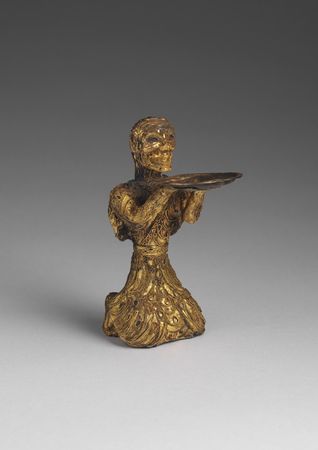

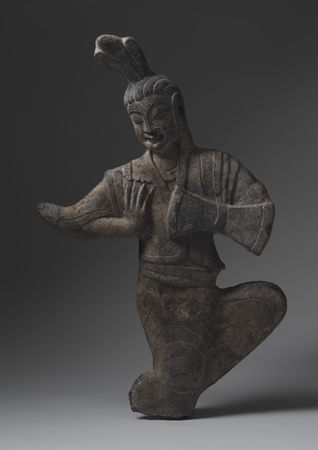


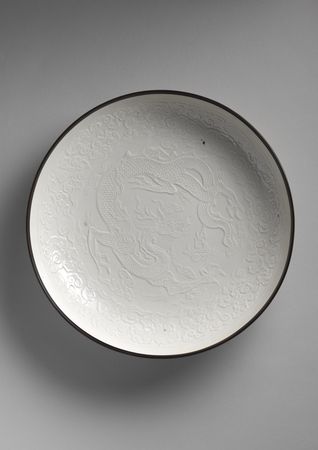
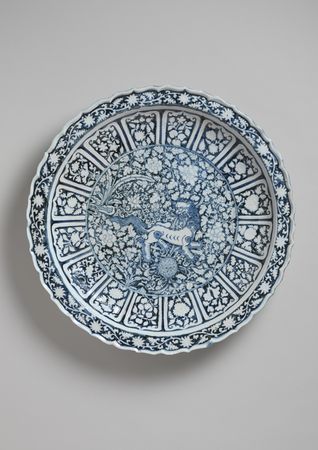

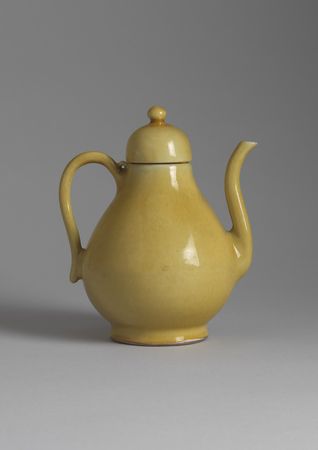



/http%3A%2F%2Fstorage.canalblog.com%2F84%2F52%2F577050%2F66521567_o.jpg)
/http%3A%2F%2Fstorage.canalblog.com%2F38%2F35%2F577050%2F66167687_o.jpg)
/http%3A%2F%2Fstorage.canalblog.com%2F57%2F06%2F577050%2F65483531_o.jpg)
/http%3A%2F%2Fstorage.canalblog.com%2F36%2F45%2F119589%2F65107496_p.jpg)